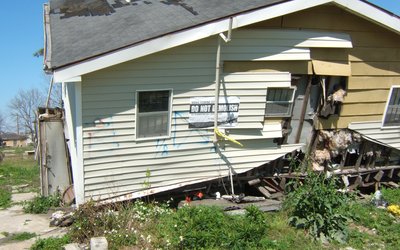Future affordability and coverage climate-risk insurance calls for more resilience
March 8, 2018

Photo: Insured losses of over US$100 billion caused by Hurricane Katrina and others during 2004 and 2005 resulted in a decrease in the availability of insurance.
Rising climate-related risks such as from floods and windstorms threaten affordability and coverage availability for society at large. The solvency of the insurance industry as a whole doesn't seem to be threatened by climate change. However, extreme hydro-meteorological events might compromise the ability of insurance companies to deal with climate impacts and increase the costs of doing business in the insurance sector. This could result in companies exiting the market or certain segments becoming uninsurable.
After extreme hydro-meteorological events, insurers tend to critically reassess their risks if payouts were higher than estimated. This reassessment could result in decreased affordability and availability of insurance. For example, after the 2002 German floods, which cost €9 billion in public funds, some observers noticed that the risk reassessment by insurance companies led to an increase in premiums of up to 50%, and a reduction in areas where flood insurance was offered of 10–20%. In the USA, insured losses of over US$100 billion caused by Hurricane Katrina and others during 2004 and 2005 resulted in a decrease in the availability of insurance. In the UK, the end of ‘universally available’ flood insurance coverage was mostly motivated by damages over £1 billion during the 2000 autumn floods, while in Ireland a series of recent floods have left businesses and homeowners in certain areas struggling to secure flood insurance.
Therefore, continuous efforts are needed to address underlying risks, monitor trends and seek innovative solutions to prevent extreme hydro-meteorological events triggering sudden withdrawals or steep price hikes. This needs to include broader measures, often not under direct control of the insurance industry, such as adjustments to building standards, stringent land-use planning, and policyholders investing in risk mitigation measures. This is a continuous process that requires monitoring, learning and innovating. This comes at a cost to the insurance industry, but it is a necessary investment to secure future markets.
Source: Cremades et al., 2018. Nature Climate Change 8: 2-12.








